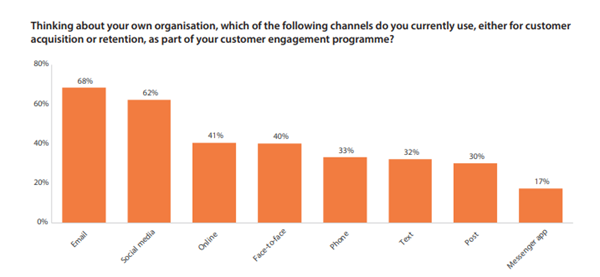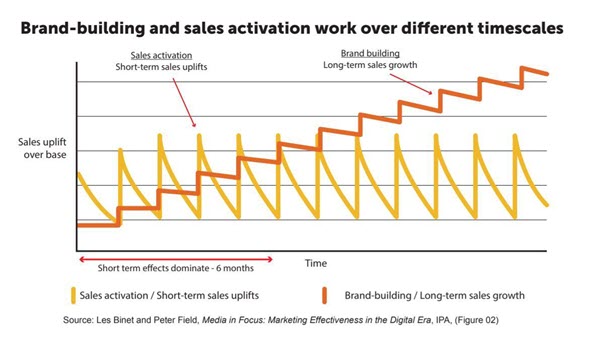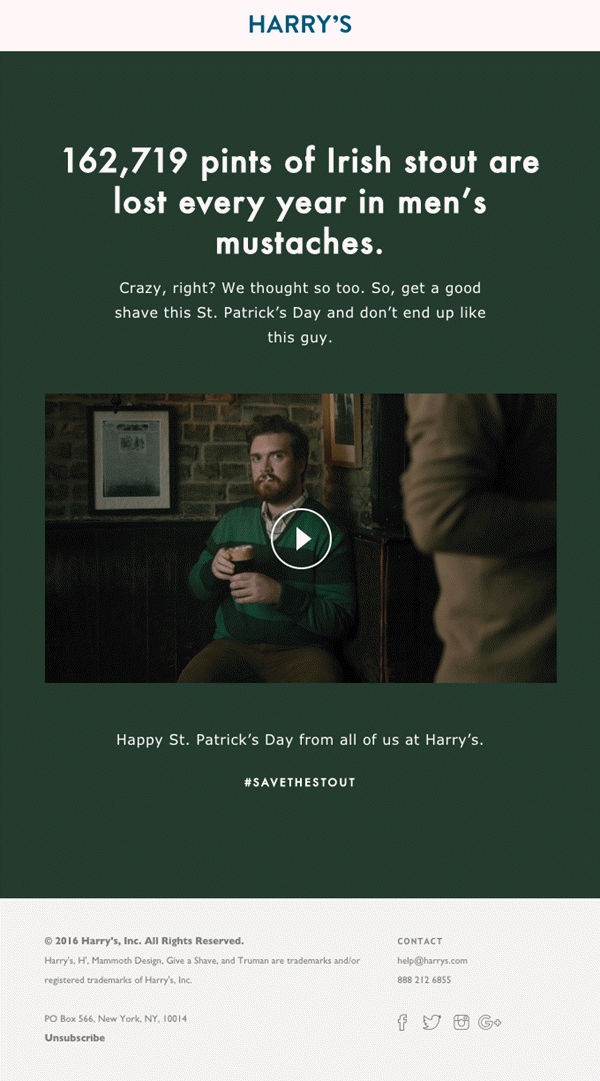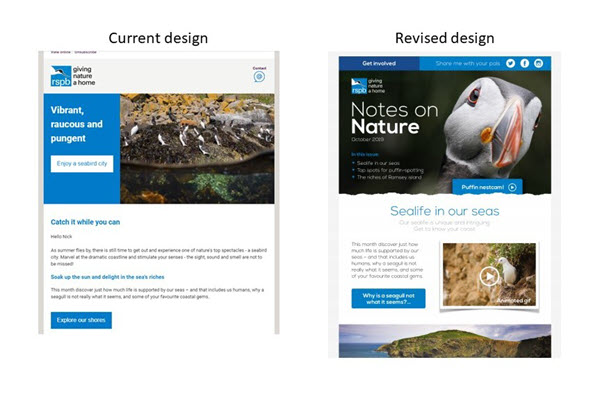If great email marketing is a blend of art and science, where has the art gone?
60% of email marketers believe that their skills are below good
45% of marketers report that half of all emails sent are not relevant
86% of customers report that over half of emails they receive are not useful
Source: DMA Marketer & Consumer Email Tracker Reports
Given the priority of email both from a consumer and business perspective, I believe we all have a responsibility to highlight that ‘OK email is NOT OK.’ Collectively we should insist on change.
Anyone in any doubt as to the importance of email?
Last week the UK’s Data & Marketing Association (DMA) published its latest “Consumer Email Tracker”. Consumers responded that email is the best channel in a range of contexts, preferring it almost twice as much as any other channel: 46% compared to 26% for post, and 24% for text or face-to-face. (source: https://dma.org.uk/research/consumer-email-tracker-2020)
From a brand perspective the DMA engagement survey reported that email is the most used channel by marketers (source: Customer Engagement - Marketers View 2018 - DMA & Pure360).

And here’s the marketers view of their email skill level (source: Marketer Email Tracker Report 2019 - DMA & dotdigital)
Until you know the art of the possible, how can you challenge the norm?
Having worked client side and as a trainer for both brand and agency teams, the common theme I’ve witnessed is a delivery based on a narrow perspective of solution possibilities and experience. In many cases the team know that more is possible, but don’t know the HOW. This leads to a rinse and repeat of current ways of working.
After all, even done badly email works, right….
In part I think it’s because email has become a victim of its own success. Email just works. With the tools provide by most platforms it’s easy to send an email. You’ll see an uplift in traffic and conversion.
Add to this that it has become cheaper to deploy, then the perceived risk of poor sends is reduced. ROI of email rises each year, currently reported at £42 back for every £1 spent (source: Marketer Email Tracker Report 2019 - DMA & dotdigital). More time is spent planning a direct mail being sent to 30k, than an email send to 1m because of the cost of send.
Reduced priority of email means less support…
With less care and attention being given to email, then those individuals planning and sending emails receive reduced skills development.
Often training is based on a handover with a colleague, who in turn gained their knowledge from a predecessor. This leads to diminishing knowledge simply based on getting the job done from current ways of working. It removes the ability to develop the approach, strategy and delivery.
It is rare to find a company investing in external training for their email team. There is of course a wealth of information publicly available across the industry, but this is much more focused on the ‘what’ rather than the ‘how’.
Why should a business care?
As I said, even poor email works. However, from both a customer relationship and brand value (and the commercial benefit this provides,) not focussing on email will have a major short- and long-term impact.
Short term, the relationship you have with your customers has a direct impact on their engagement and spend with you. You won’t see this in your unsubscribes as apathy rules email inbox management, but you will see a decline in the open, click and conversion from maturing sign ups.
In the 2019 DMA email tracker, consumers where asked “how they would want to manage the communications they receive.” The top response was ‘to reduce the frequency of emails’ (36%) However I would challenge this. Consumers want more not less information when its relevant and of interest.
I have sat in many focus groups where consumers start by telling us that they feel bombarded with email, but when talking about something they are interested in e.g. music gigs or good food, they are quite happy to receive all information available, at high frequency, on these topics.
When its relevant, it’s not a nuisance.
Longer term even more damage is being done to brand perception. As the study from Binet and Field clearly shows, brand building provides more sales growth in the long term. Done well, Direct Marketing (especially email) enables relationship building and truly customer centric activity. Can a brand really afford not to give a higher priority to this key channel.

What part do vendors and agency have play in this?
Having spent many years vendor and agency side, I fully appreciate the push / pull of strategy and ideation vs. delivery (often with a backdrop of client chaos and conflicting priorities.)
As vendors we can become myopic to the functions of our platform. Excited by the possibility our tech enables, but without thought to HOW an end user might achieve change and development. The strategy and planning of a customer journey. Not the steps on a campaign canvas (send email A, if not opened send email B etc) But the nurture and step by step messaging required. In context of what that customer needs from you as a brand, at that moment in time. Progressing your audience gently from awareness to multiple use. You don’t ask for marriage on a first date.
Agencies are in part better at generating this story telling in their campaign execution, but very often lack the specialist email skills to deploy this element of an integrated campaign. From content approach (where very often less is more) to audience selection, where data logic is an art in itself.
Finding the Art of the Possible
For both brand, vendor and agency the key element for me is an investment in understanding the art of the possible. This full horizon scan provides the opportunity to plan a development journey. It becomes a blend of storytelling (based on knowing your end customer), technology and design.
In part this can be achieved from a better share of experience and perspective from across brand, vendor and agency. Part of the training I deliver to vendors and agency teams is the marketeer’s perspective. What is it like to be client side, in the marketing chair. Enabling those non client side to become empathic to the conflicts, internal justifications and fear of change, many marketing treams work within.
Likewise, for brands, training covers a width of topics from creative, to developing segmentation logic, to test plan management. But as importantly how to add engagement through interest and dare I say it, entertainment. Not matter how sterile you think your product.
In essence how to break free from the safety of rinse and repeat and start putting a little magic back into the mix. Here’s one small example of how to do that.

A great use of humour to gain interest in a utilitarian product. Even if you’re not looking for a razor, the entertainment provided would save any feeling of ‘wasted time’ and disengagement.
Humour is an easy example, but not always an option. Challenging yourself to review the key elements of an email and think with a width of consideration, will always be beneficial. I’m currently working with a nature conservation charity. They build in-house using a template approach, as they don’t have html skills within the team.
As part of a review of their emails we allowed ourselves to take a design first approach as part of the planning and discovery phases – so as not to constrain ourselves too soon with the limitations of email render.
This provided a focus on image elements and how these could be treated to lift an email. So that design became as important as the content message.

What this process has enabled is an education and wider consideration about how the team work with design elements. The paper tear effect on the bottom of the main image in the revised design, is a great example. It really lifts the design. Giving it a polish that any reader would appreciate (even if they don’t explicitly notice it)
Internally it’s provided a new way of considering images. How can they be treated to provide an extra layer of impact (as well as the key consideration of which image to use and why from the library)
Once again, we have ‘art’ being added to the science of building the email. With a team now working with a renewed consideration and determination to develop their email output.
Make the effort with your content
Engagement is the key to great marketing. Engagement can be created through relevance, but this is not always possible depending on lack of insight or channel e.g. broadcast.
Engagement can also be created through interest. Make the effort to create interesting content and you will engage. This will benefit the brand perception, even if the proposition is ‘off’ for the individual at that moment in time.
Summary, we all have a responsibility to make email great.
Just because email works, even when executed poorly, is not a reason to allow this to happen.
Vendor, agency and brands have a shared responsibility to learn the art of the possible, from all perspectives of email from strategy, tactics, creation and execution.
Brands need to offer support and development (both budget and time) to their email teams through training and knowledge share. Absorb the wealth of knowledge that exists publicly, but also look at investing in upskilling the team on how to mature and develop their current ways of working.
Vendors need to balance platform capability with content. Supporting their clients across strategy and tactics. Just because your platform makes segment and cohort identification simpler, does not mean an end user will know what to say and when.
For agencies there is a blend of development across both areas. Develop and upskill your in-house email teams to become true experts. Great content teams do not automatically make great email teams. Support and challenge your clients. Help show the art of the possible to inspire them to mature and in turn, challenge you to create better more sophisticated email campaigns.
In a rallying cry that ‘OK email is NOT OK’ let us put the ‘art’ back into email marketing.
It would be great to get your view on how we can support email teams to create better emails.
- Where do you find delivery teams lack experience and knowledge?
- How do they current bridge this and is it effective?
- If not what needs to change in the future?

 How to resolve AdBlock issue?
How to resolve AdBlock issue? 
